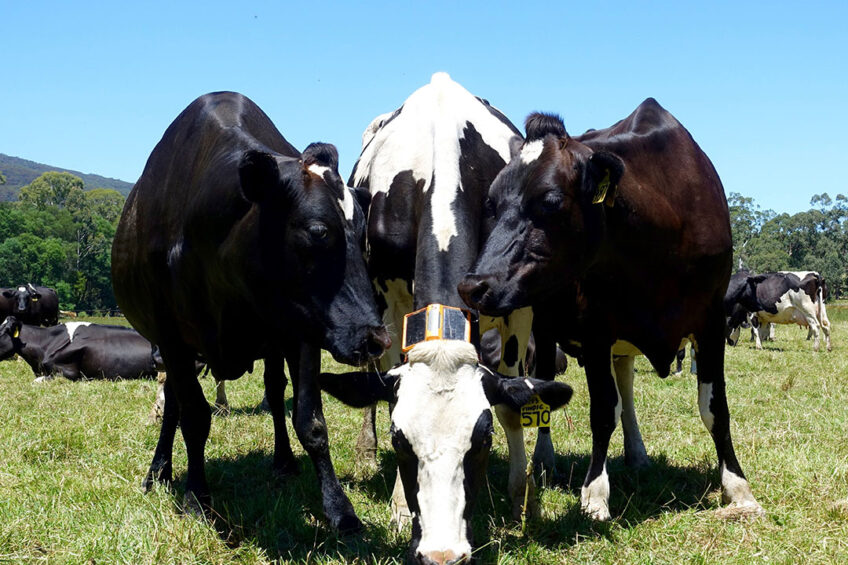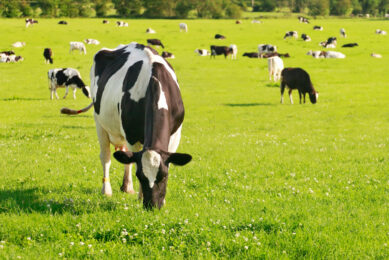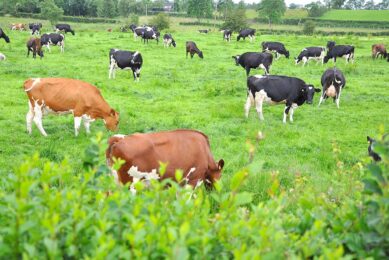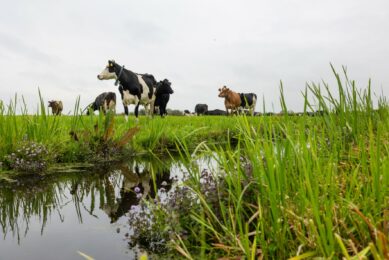The benefits of virtual fencing

Draw your boundary anywhere and your cattle are trained to remain within your virtual fence.
The smart collar system for livestock, called eShepherd, enables cattle producers to create “virtual fences”. Using a smartphone, tablet or PC, producers can remotely fence, muster and monitor their livestock 24/7 from anywhere in the world. This virtual fencing system uses a GPS-enabled, solar-powered smart collar containing a CSIRO-developed algorithm to train cattle to stay within the virtual boundary when they hear an audio cue from the collar.
Video: How it works
Number of advantages
According to the company, the virtual fencing concept has a number of advantages:
 Promoting soil fertility
Promoting soil fertility
Virtual fencing allows a pasture manager to quickly and easily position livestock. Cattle can be moved across grassland biomes in a manner where the movement of hooves promotes soil fertility and restores the soil/plant microbiome to increase soil nutrients and overall soil conservation. The presence of manure, insects and earth bacteria contribute to this ecosystem cycle, resulting in increased biodiversity, a better pasture biomass and revitalised soil
 Better pasture management
Better pasture management
eShepherd virtual fencing gives farmers more control over their pasture management without the issues of constantly moving physical fences. Accurate and real time data on livestock movement provides managers the information they need to make quick decisions. They can change grazing patterns day to day, ensuring that pasture is utilised in the best possible way. Remote management provides another layer of control, as a virtual fence can be created, adjusted or removed from anywhere in the world.
 Controlled conservation grazing
Controlled conservation grazing
Virtual boundaries can be particularly useful for natural resource managers. In many areas of the world, farmers graze their cattle during the summer on public conservation land. However, it is usually impractical and often disallowed to build fencing in conservation areas.
 Riparian protection
Riparian protection
Natural resource organisations have also found virtual fencing useful in managing cattle around aquatic ecosystems. Riparian zone control can be an expensive proposition as fencing next to a river for example can be destroyed by the very next flood. A riparian zone or riparian area is the interface between land and a river or stream.

More productive and profitable farms
Ian Reilly, CEO of Agersens, said the technology has the capacity to revolutionise livestock farming globally by unlocking value from the digital transformation of the beef and dairy industries. “Using eShepherd, beef and dairy producers will be able to improve the grazing control and wellbeing of livestock and protect wildlife from the danger of entanglement in traditional fences. This will lead to more productive and profitable farms. Modern producers understand that improved grazing control leads to more productive and profitable farms, and they are keen to adopt technology that will get that result,” said Mr Reilly.
The technology was patented by CSIRO and is licenced exclusively to Agersens worldwide, both from Australia. The 2 companies have recently strengthened their partnership by signing a Collaboration Agreement (CA) to build on their existing relationship as they develop and commercialise livestock technologies made possible by eShepherd.
Join 13,000+ subscribers
Subscribe to our newsletter to stay updated about all the need-to-know content in the dairy sector, two times a week.










